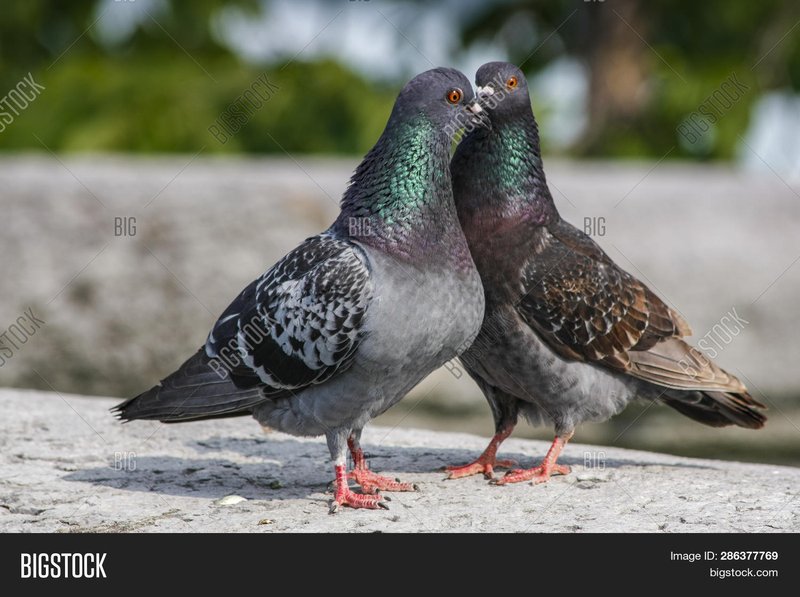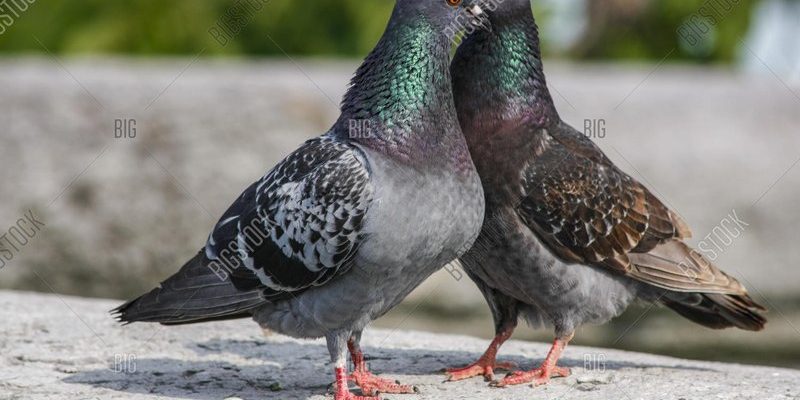
Imagine a city park, where pigeons strut around, puffing out their chests and cooing softly to one another. It might look simple, but there’s a whole lot of communication happening beneath the surface. From flashing their feathers to unique sounds, the courtship of pigeons is like a carefully choreographed dance—their way of saying, “Hey, I’m ready for love!” Let’s dive into the captivating world of pigeon romance, exploring what gets these birds in the mood and how they choose their mates.
Understanding Pigeon Courtship
Pigeon courtship usually starts with a bit of a show. Male pigeons take center stage, performing to impress potential mates. You’re likely to see them puffing out their chests, lifting their heads, and bowing dramatically. This display isn’t just for fun; it’s a signaling technique. The males want to appear as strong and healthy as possible, showing off their vibrant feathers and impressive size to woo the females.
The flashy bow, combined with a series of low coos, creates an enchanting atmosphere. It’s almost like a serenade in the park. These vocalizations and movements serve a purpose—they communicate to females that the male is both available and fit for breeding. Imagine a guy in a café trying to catch someone’s attention with a sweet serenade; that’s what pigeons are doing, just with feathers and coos instead!
The Role of Vocalizations
Vocalizations play a crucial role in the courtship rituals of pigeons. The characteristic *cooing* sound you often hear is not just noise; it’s a part of their love song. Male pigeons produce various sounds, including soft coos and more urgent calls, each with a different meaning. These vocalizations help establish the male’s presence and invite females to engage.
During courtship, a male might start with soft coos, gradually building up intensity. This progression communicates not only his enthusiasm but also his commitment to the female. When a female responds positively—maybe by tilting her head or engaging in her own vocalizations—it’s a clear sign things are moving in the right direction. It’s a beautiful back-and-forth that mirrors the way human interactions often work when looking for a partner.
Pigeon Pair Bonding
Once a male successfully attracts a female, the next step is forming a strong pair bond. Pigeons are known for their monogamous tendencies, often partnering for life. This means that once they’ve chosen each other, they’ll stay together through thick and thin, engaging in courtship displays even after they’re already a couple.
You might be wondering what solidifies this bond. Well, after mating, pigeons engage in a practice called “mutual preening.” This is where they clean each other’s feathers. Think of it as a cozy hair salon session, where one pigeon lovingly helps the other look sharp. This grooming not only strengthens their pair bond but serves as an essential part of their social interaction, reinforcing their connection.
The Importance of Nesting
Nesting is another crucial part of the courtship and bonding process. Once the pair is established, they work together to find a suitable nesting site. This could be anywhere from a city ledge to a tree cavity. Building a nest is like preparing a home for the future—a place where they’ll raise their young together.
Both male and female pigeons contribute to nest building, gathering materials like twigs, leaves, and even bits of plastic—whatever they can find in their environment. This teamwork not only strengthens their bond but is also essential for the survival of their future chicks. It’s a wonderful example of partnership that underscores their commitment to each other.
Mating Rituals and Techniques
When it comes to mating, pigeons have their own set of rituals to get into the mood. After the courtship phase, when both parties feel ready, they engage in a mating display where the male mounts the female in a brief but passionate encounter. This process is surprisingly quick, but it’s packed with meaningful interactions that emphasize their connection.
During mating, the male will often flap his wings and perform exaggerated movements—almost like a dance move. This display isn’t just for fun; it’s a vital part of establishing their reproductive success. Pigeons mate multiple times, which increases the chances of successful fertilization. It’s a bit like making sure they get it right the first time; repetition in nature often leads to better results!
The Importance of Timing
Timing is crucial in the mating rituals of pigeons. Their breeding cycles often align with favorable environmental conditions, like the change of seasons. For instance, many pigeons choose to mate during spring when food is abundant, giving their young the best chance at survival.
In a way, it’s all about being aware of the world around them. Pigeons can sense changes in daylight and temperature, which helps them know when it’s the right time to reproduce. Imagine planning a picnic with friends—pigeons are waiting for that perfect sunny day to start their own family!
Challenges in Pigeon Courtship
While the courtship and mating rituals of pigeons are mostly charming, they do face several challenges. Urban environments can be tricky. Pigeons often have to compete with other birds, as well as navigate human interference, like construction and pollution. This competition can sometimes lead to conflicts during mating seasons, making it harder for pairs to bond effectively.
Another challenge is finding suitable nesting sites. With cities expanding and natural habitats dwindling, pigeons must adapt and become resourceful. This can mean using unconventional materials or nesting in less-than-ideal locations. But just like people finding creative ways to make it work, pigeons are resilient and find ways to thrive despite the odds.
Predation and Protection
Predation is a real threat during courtship and nesting. Birds of prey, like hawks, view pigeons as prime targets, especially when they’re busy displaying their stunning courtship behaviors. Males can be particularly vulnerable while showing off for a female. To combat this, pigeons often nest in groups, providing safety in numbers.
By sticking together, they can keep watch for predators while still pursuing their love lives. This social aspect is vital; it mirrors how friends might look out for each other while on a group date. The strategy not only helps with survival but enhances their chances of successful mating.
The courtship and mating rituals of pigeons might seem straightforward at first glance, but a closer look reveals a world rich with intricate behaviors and meaningful connections. From their captivating displays to their solid pair bonds, pigeons have crafted a beautiful love story that mirrors aspects of our own relationships.
As you watch these birds in your local park, take a moment to appreciate the artistry behind their courtship. The way they strut, coo, and work together speaks to their resilience and adaptability. Next time you see a pair of pigeons, remember—their love might not be the stuff of fairy tales, but it’s undoubtedly a remarkable dance of nature.

